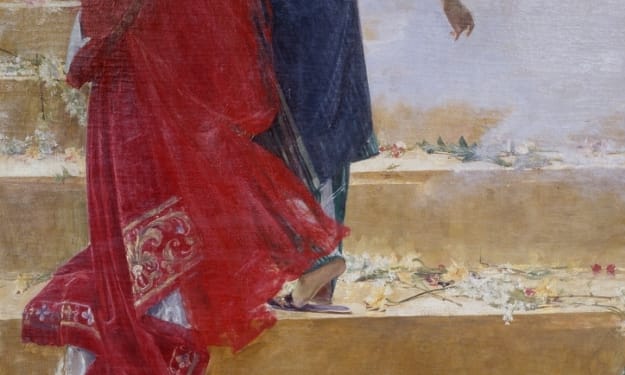Tales of Peace in Times of War
The Christmas Truce and Fraternization Along the Western Front

Introduction
On the cusp of the 20th century, the world became embroiled in a conflict of unprecedented scale and brutality—the Great War. This seismic event, later known as World War I, engulfed nations, reshaping political boundaries and societal norms. The Western Front, a major theatre of the war, bore witness to some of its most harrowing episodes. Here, long, snaking trenches filled with soldiers became symbols of a grim stalemate, embodying the gritty reality of war in all its rawness.
Yet, amidst this appalling environment of mud, blood, and shellfire, a glimmering moment of shared humanity shone through, defying the very essence of conflict. As Christmas approached in 1914, just months into the war, an extraordinary and unforeseen event was on the horizon—one that would come to epitomize the enduring human capacity for compassion, even in the face of profound adversity. This was the spontaneous truce that unfolded along stretches of the Western Front, a respite from the hostilities that offered a potent counterpoint to the surrounding carnage. Now, more than a century later, the story of the Christmas Truce continues to captivate and inspire.
Contextualizing the Truce
Understanding the magnitude of the Christmas Truce requires a glimpse into the harsh realities that soldiers on both sides faced. By December 1914, the initial optimism that characterized the war's outbreak had been replaced by a grim understanding of its true scale and the conditions it would impose. The trenches, separated by a death-strewn no man's land, were overcrowded, cold, and prone to flooding. Sanitation was poor, disease was rampant, and the constant threat of artillery fire made sleep a fleeting luxury.
Amid these deplorable circumstances, the men in the trenches were gripped by uncertainty, fear, and homesickness. Letters from the front lines bear witness to their longing for home comforts and the painful dissonance between life in the trenches and the festive season approaching. Yet, these letters also reveal something else: a sense of shared humanity and understanding that transcended national boundaries.
In this dire context, an event as unlikely as a truce between enemies seemed far-fetched. But the stage was set for a Christmas miracle—one that underscored the commonalities between supposed foes more effectively than any political rhetoric could.
The Christmas Truce Unfolds
As Christmas Eve descended upon the Western Front, an eerie calm replaced the usual cacophony of gunfire. In some sectors, German troops began decorating their trenches with candles and makeshift Christmas trees. Spontaneously, carols echoed across the frostbitten fields, forging a bond of shared tradition amidst the desolation.
Diaries and letters from soldiers on both sides provide vivid first-hand accounts of what unfolded next. British troops recounted hearing "Stille Nacht" (Silent Night) being sung in German from the opposing trenches, to which they responded with English carols. A mutual curiosity and respect began to emerge, replacing the customary hostility.

On Christmas Day itself, soldiers ventured tentatively into no man's land. What transpired was remarkable. Men who had been shooting at each other just days before now exchanged greetings, gifts of food, tobacco, and small keepsakes. Some reports even mention impromptu football matches played in the cratered mud between the lines. For a brief period, the battlefield transformed into a meeting ground where common language, laughter, and stories were shared.
This truce wasn't universally observed along the entire Front; in many sectors, the fighting continued unabated. Yet, where it did occur, it offered a stark contrast to the destructive forces at play, reminding everyone involved of their shared humanity.
Truces Beyond Christmas Day
The spontaneous fraternity observed during the Christmas Truce of 1914 wasn't an isolated incident. Throughout World War I, there were various instances of informal truces and fraternization along the Western Front. Often these were pragmatic arrangements to recover fallen comrades or improve trench conditions. Other times, they were simply brief respite periods where no shots were fired—an unspoken agreement to allow each side a moment's peace.
These occurrences developed organically, often influenced by factors such as the cultural backgrounds of the soldiers, the shared experiences of trench warfare, and even the weather. They typically happened without explicit approval from higher command structures, with soldiers on both sides exercising their personal agency amidst the mechanized conduct of war.
The impact of these temporary ceasefires was significant. Soldiers' diaries often noted a shift in mood following these events—a renewed sense of humanity, a change in perspective regarding the 'enemy', and questions about the war's purpose. The truces didn't stop the war, but they did disrupt the binary narrative of us-versus-them, challenging established perceptions and military strategy.

Factors and Reactions
The spontaneous truces, particularly the Christmas Truce of 1914, were influenced by a combination of factors. The shared hardships of trench warfare played a significant part, fostering camaraderie among soldiers on both sides. Cultural bonds—such as the mutual celebration of Christmas—also encouraged fraternization. Leadership styles in individual sectors also had an impact; some officers turned a blind eye to these informal ceasefires, while others strictly prohibited them.
Reactions to these truces varied considerably. Front-line officers often tolerated them, understanding the morale boost they provided. However, high command and political leaders on both sides viewed these events with concern, fearing they would undermine military discipline and prolong the war.
In the wake of the Christmas Truce, orders were issued explicitly forbidding fraternization with the enemy. Future Christmases in the war saw concerted efforts from military leadership to prevent a recurrence of the 1914 truce. Despite this, instances of fraternization continued sporadically throughout the war, albeit on a smaller scale and in greater secrecy.
The public reaction was mixed. Some viewed these truces as acts of humanity amidst the brutality of war, while others perceived them as betrayals or signs of weakness. Newspaper coverage ranged from sentimental appreciation to outright condemnation. Yet, over time, the narrative of the Christmas Truce became romanticized, becoming a symbol of peace and shared humanity in popular memory.
Legacy and Reflection
The legacy of the Christmas Truce of 1914 is enduring and multifaceted. As an event, it has been immortalized in history books, songs, films, and annual commemorations. Its symbolism as a moment of humanity amidst one of the most devastating wars in history continues to resonate.
Yet, beyond its cultural impact, the truce also holds profound lessons about war, peace, and human nature. It challenges the binary perception of 'us' versus 'them', illustrating that even under conditions designed to dehumanize, empathy and commonality can flourish. This insight is not confined to the past; it remains relevant to contemporary conflicts where divisive narratives continue to fuel hostility.
Finally, the Christmas Truce invites us to reflect on the agency of individuals within larger events. The soldiers who participated were not high-ranking officials or diplomats—they were ordinary men caught up in extraordinary circumstances. Yet their decisions profoundly influenced the course of events, reminding us that individuals, too, shape history.
Remembering the Christmas Truce of 1914, therefore, isn't just about recalling a historical event. It's an invitation to consider the complexities of war, the potential for shared understanding, and the enduring power of our common humanity.

Conclusion
The Christmas Truce of 1914 stands as one of World War I's most poignant episodes—a beacon of shared humanity shining through the shadows of brutal conflict. As the guns fell silent and soldiers crossed into no man's land, the lines between friends and foes blurred, highlighting our common bonds and challenging the narrative of dehumanization intrinsic to war.
Through examining the conditions leading up to this extraordinary event, the truce's unfolding, and subsequent truces throughout the war, we gain insight into the complexities of warfare and the enduring human spirit. We witness the potential for empathy and understanding in even the most unlikely circumstances—lessons that remain relevant today.
The reactions and factors influencing these truces paint a picture of the dichotomous perspectives on fraternization. While high command saw potential damage to morale and discipline, soldiers at the frontlines found respite and camaraderie in these shared moments.
More than a century later, the legacy of the Christmas Truce continues to resonate, reminding us of the pivotal role ordinary individuals play in shaping history and the transformative power of shared experiences and understanding. As we remember this event, we are called upon to reflect upon our capacities for empathy and peace, even in times of division and strife.
In a world still marred by conflicts, remembering the Christmas Truce implores us to look beyond rigid narratives, prompting us not only to hope but also to work for a world where peace is more than just a brief interlude amid hostilities.
About the Creator
Richard Clements
Unearthing the Mysteries of History, Crime, and the Unknown
Delve into the captivating world of history, crime, and mystery through factual writing. Explore the past, unravel human behavior, and solve enigmas.
Enjoyed the story? Support the Creator.
Subscribe for free to receive all their stories in your feed. You could also pledge your support or give them a one-off tip, letting them know you appreciate their work.






Comments
There are no comments for this story
Be the first to respond and start the conversation.